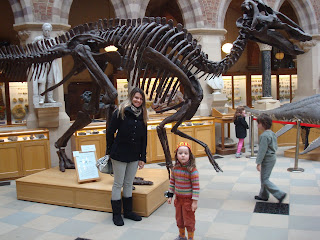Pitt Rivers Museum - Oxford, UK

The Pitt Rivers Museum is a museum displaying the archaeological and anthropological collections of the University of Oxford. The museum is located to the east of the Oxford University Museum of Natural History, and can only be accessed through that building.
The museum was founded in 1884 by General Augustus Pitt Rivers, who donated his collection to the University of Oxford with the condition that a permanent lecturer in anthropology must be appointed. Museum staff are involved in teaching Archaeology and Anthropology at the University even today.
The original donation consisted of approximately 20,000 items, which have now grown to 500,000 items, many of which have been donated by travellers, scholars and missionaries.
The museum's collection is arranged thematically, according to how the objects were used, rather than according to their age or origin. This layout owes a lot to the theories of General Pitt Rivers himself, who intended for his collection to show progression in design and evolution in human culture from simple to complex. While this evolutionary approach to material culture is no longer accepted in archaeology and anthropology, the museum has retained the original organisation of the displays. The display of many examples of a particular type of tool or artifact, showing historical and regional variations, is an unusual and distinct feature of this museum.
The museum has an incredibly high density of objects on display, and the displays are regularly changed.
In 2004, the museum received £3,700,000 from the Higher Education Funding Council for England (HEFCE) to build a research annexe adjoining the museum. Building work was completed in 2007, bringing the academic staff of the museum back to the site, and providing a laboratory for conservation of the specimens. The annex will not affect the Victorian displays of the museum.
The second phase of development began on July 7, 2008 necessitating the closure of the museum and galleries. The museum reopened on 1st May 2009. In this work, the 1960s exhibition gallery was dismantled, restoring the original view through to the Museum’s totem pole. Original display cases were returned to their original place at the front of the Museum. The space upstairs vacated by these cases provides additional space for a Clore Duffield Education Centre. A new entrance platform allows visitors to enter on the same level as the Oxford University Museum of Natural History and improves access for wheelchair users and parents with pushchairs. The entrance platform provides re-located shop and reception areas. An environmental control system has also been installed.
The Pitt Rivers Museum, along with the Oxford University Museum of Natural History, won The Guardian's award for Family Friendly Museum of 2005.

Ashmolean Museum - Oxford, UK
The Ashmolean Museum (in full the Ashmolean Museum of Art and Archaeology) in Oxford, England, is the world's first university museum. Its first building was built in 1678–1683 to house the cabinet of curiosities Elias Ashmole gave Oxford University in 1677.
The works include those of Elias Ashmole, which he had collected himself as well as those he had acquired from the gardeners, travellers and collectors John Tradescant the elder and his son of the same name. The collection included antique coins, books, engravings, geological specimens, and zoological specimens — one of which was the stuffed body of the last Dodo ever seen in Europe, but by 1755 it was so moth-eaten it was destroyed, except for its head and one claw. The museum opened on 24 May 1683, with naturalist Robert Plot as the first keeper. The first building, which became known as the Old Ashmolean, is sometimes attributed to Sir Christopher Wren and Dr. R. T. Gunther.
After the various specimens had been moved into new museums, the "Old Ashmolean" building on Broad Street was used as office space for the Oxford English Dictionary staff. Since 1935, the building has been established as the Museum of the History of Science, with exhibitions including the scientific instruments given to Oxford University by Lewis Evans (1853–1930), amongst them the world's largest collection of astrolabes.
The present building dates from 1845. It was designed by Charles Cockerell in a classical style and stands on Beaumont Street. One wing of the building is occupied by the Taylor Institution, the modern languages faculty of the university. The main museum contains the original collections of Elias Ashmole and John Tradescant (father and son), as well as huge collections of archaeology specimens and fine art. It has one of the best collections of Pre-Raphaelite paintings, majolica pottery and English silver. The archaeology department includes the bequest of Arthur Evans and so has an excellent collection of Greek and Minoan pottery. The department also has an extensive collection of antiquities from Ancient Egypt and the Sudan, and the museum hosts the Griffith Institute for the advancement of Egyptology.
The interior of the Ashmolean has been extensively modernised in recent years and now includes a restaurant and large gift shop. The Sackler Library, incorporating the older library collections of the Ashmolean, opened in 2001 and has allowed an expansion of the book collection, which concentrates on classical civilization, archaeology and art history.
Between 2006 and 2009, the museum was extensively rebuilt and expanded to the designs of architect Rick Mather and the exhibition design company Metaphor, supported by the Heritage Lottery Fund. The rebuilding resulted in five floors instead of three, with a doubling of the display space as well as new conservation studios and an education centre. The renovated museum re-opened on 7 November 2009.
















Sem comentários:
Enviar um comentário